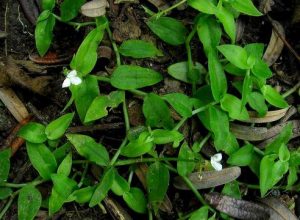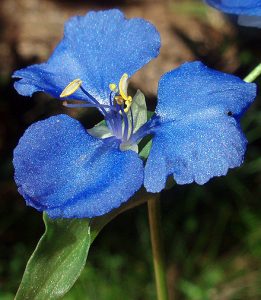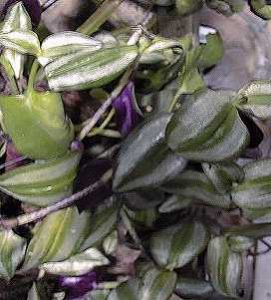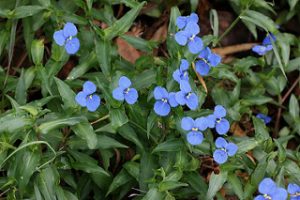

Tradescantia sp, commonly known as the Spiderworts, and even more frequently called “Wandering Jew”. Is an extremely common cause of contact allergies in our doggy friends. This plant is extremely common in the Queensland backyard, often accepted as a ground cover plant in some gardens. Here is a range of pictures of various subspecies and their flowers. As you can see the species can have many forms.
Wandering Jew is a common cause of contact allergies in dogs. The problem normally affects the underbelly, armpits and groin of the dog, as well as ears and face. Starting as pustules surrounded by red skin which the dog will self-traumatize – occassionally leading the bleeding and raw skin.
In the past few weeks I have seen at least 6 cases of confirmed allergy to this plant. The best recommendation I can give is to remove the plant from the garden. Failing that prevent their dog accessing the plant.
From the DPI QLD website. http://www.dpi.qld.gov.au/cps/rde/dpi/hs.xsl/4790_7385_ENA_HTML.htm
In a recent review of this article I was able to identify another species of plant that may be incorrectly identified as Wandering Jew and is probably more common in south east Queensland. This plant is not considered a noxious weed however does seem very good at proliferating in sunny areas.
I am still unsure as to whether this species is also allergenic but I suspect it might be. The plant has small hairs on the main stems that could plausibly cause allergic reaction in dogs.


General information
A native of South America, wandering jew ([wiki id=en]Tradescantia fluminernsis[/wiki]), also called Trad, is a fleshy-leaved creeping plant that grows as a ground cover.
A good, non-invasive native alternative to wandering jew is scurvy grass (Commelina diffusa).
Wandering jew is not a declared plant under Queensland legislation, however its control is recommended.
| Scientific name | Tradescantia fluminernsis |
|---|---|
| Impacts |
|
| Description |
|
| Habitat and distribution |
|
| Control |
|
| Declaration details |
|
Based on this information and the fact that it causes problems for our canine companions I think it should be removed from gardens. To remove it your best bet is a good metal rake. “Rinse and repeat fortnightly as they say” Herbicides are not effective not to mention unhealthy.
Treatment
Treatments depends on the severity of the case. Mild cases may just need a bath to wash away the allergens. Moderate cases may need an injection of cortisone to relieve the allergic reaction. Severe ongoing cases may need more intestive therapy with antibiotics, pain relief and anti- inflammatories.
Call us on 33571588 for more information

I’m very confused by this post.
Two of the above pictures show Commelina, not Tradescantia.
You mention another plant that “may be more common” but don’t provide a name for it, although you suspect it might also be allergenic.
Later you say Commelina is a “good alternative.”
Is native Commelina safe for dogs in your view or is it also a suspected allergen?
I wrote this article about 8 years ago and you are the first to correct me on it!…I think you’re spot on but they are both part of the Commelinaceae family and yes both are allergens.